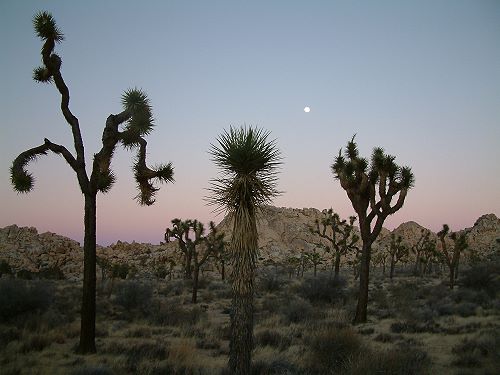
JOSHUA TREE NATIONAL PARK
01/2004

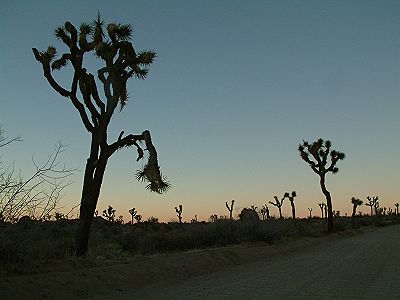
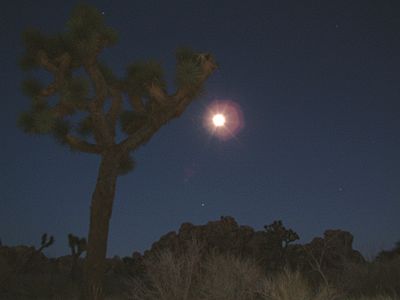
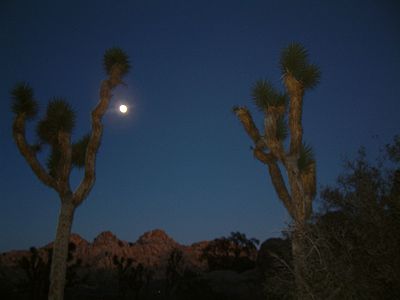
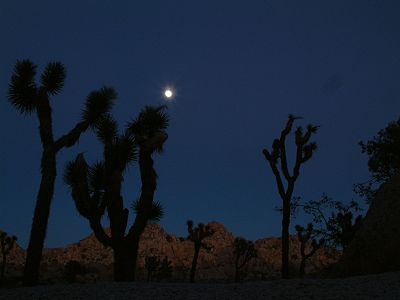
| The Joshua Tree Nat. Park
The park is about 150 miles (240 km) west of Los Angeles "behind" the San Bernardino mountains. It offers some nice hiking and mountain-biking trails and is well known for it's climbing and bouldering opportunities. Coming from L.A. the silence in this abandoned mountainous area was very impressive. The weird looking kind of "tree" can get up to 300 years old and is a giant member of the lily family. It is mainly found here in the Mojave Desert. Those "trees" do not have growth rings, so age has to be guessed be dividing the height of a Joshua tree by the average annual growth of one-half inch (1,2 cm) per year. |
|
|
|
By the mid-19th century Mormon immigrants made their way
across the Colorado River: The legends says that the pioneers named the
tree after the biblical figure, Joshua, seeing the limbs of the tree
outstretched in supplication, guiding the travellers westward (!!!)
For more infos about the park go to www.nps.gov/jotr/ or www.desertusa.com/jtree/jtdes.html or www.joshua.tree.national-park.com/ and www.joshuatree.org/content/virtual2.html |
|
View of Yucca- and 29-Palms-Valley from the trail to 49-Palm-Oasis. |
|
|
|
49 Palms Oasis
Palms a rare sight in a desert. They can be found often along fault lines, where rock forces the water to the surface. The desert fan palm (Washingtonia filifera) is native to the low hot deserts of Southern California. It can live for 80 to 90 years and provides shelter and food for birds, bats and even coyotes. |
|
Reflections at the lake behind Barker Dam The dam was built in the 1920's to store water for cattle and farming during the dry season. Unfortunately rain in this area became less and less in this area, so cattlemen moved further west to feed their cattle. |
|
|
|
the Jumping Teddy Bear Cactus |
|
another cactus which the Germans name "mother-in-law's pillow" |
|
|
|
The Coyote
The most successful inhabitant in the desert. Its skills as a hunter and his appetite for everything swallowable ensures its survival. Its diet includes insects, lizards, snakes, rabitts, rodents, fruits, nuts and grass |
|
|
|
|
|
Key's View
This outstanding scenic point overlooks the Coachella Valley (Palm Springs) and the Salton Sea from its elevation of 1581 m (5,185 feet). In the distance Signal Mountain is visibal. It is 95 miles away and just behind the Mexican border. It only can be seen on clear days, because air-pollution coming from the L.A.-area "hides" the mountain on 50% of the year. |
|
Wind coming from the west (L.A.-area) has to go through a narrow conduit when coming uphill. Hundreds of modern wind-mills take advantage of this effect to produce electricity. |
|
For more infos about the park go to www.nps.gov/jotr/ or www.desertusa.com/jtree/jtdes.html or www.joshua.tree.national-park.com/ and www.joshuatree.org/content/virtual2.html
Reisefotos (Travelphotos) Homepage 1/2004-Content email: beate.matthias@kuhn.as